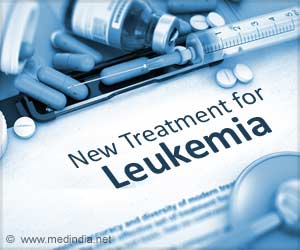Microplastics leach toxic substances into human tissues and are present in human breast milk, blood and lung tissue.
- Plastic water bottles, baby bottles, and the protective coatings in canned foods have raised concerns about the ill effects of plastic
- Human blood, lung tissue, colons, placentas, stools, and breast milk contain microplastics raising concern about the harmful effects of plastic on human health, risks of microplastics
Since 2019, the World Health Organization has released reports about microplastics and human health. At the end of August 2022, they published their most current findings.
“Although the limited data provide little evidence that nano- and microplastic particles have adverse effects in humans, there is increasing public awareness and an overwhelming consensus among all stakeholders that plastics do not belong in the environment, and measures should be taken to mitigate exposure,” said the WHO.
We do not have enough clarity yet to conclude with certainty whether microplastics are already causing long-term damage to our systems.
Dr Dick Vethaak, an expert on microplastics and retired professor of ecotoxicology at Amsterdam's Vrije Universiteit, calls it ‘a plastic time bomb.’
TOP INSIGHT
Microplastics are found in human tissues such as blood, lungs, and breast milk. They leach harmful chemicals in the body that can affect our health.
Why is Plastic a Problem
Except for what is burned down, every single piece of plastic that has ever been manufactured is still here on Earth. According to previous estimates, just 9% of all plastic is recycled. It leaves 9 billion tons of plastic in our landfills, oceans, and ecosystems. For comparison, the Great Pyramid of Khufu is 1,500 times heavier than that amount.Even worse information has emerged. According to Greenpeace research from 2022, recycling in the United States was only at 5% in 2021, and a significant amount of what people consider to be ‘recycled’ still ends up in landfills or bodies of water.
Additionally, this plastic does not vanish. Instead, it disintegrates into microplastics and nano plastics, which are ever-tinier particles.
What are Microplastics
Microplastics are plastic particles with a diameter of between 5 millimeters and 100 nanometers, or between ten times thinner than a human hair and the width of a pencil eraser. Anything further smaller is nano plastic.“Microplastics include a wide range of different materials, different sizes, different shapes, different densities, and different colors,” says Evangelos Danopoulos, PhD, a microplastics researcher at Hull York Medical School in the United Kingdom.
‘Primary’ microplastics are small and are utilized in products like paint and cosmetics. ‘Secondary’ microplastics are bigger and found in plastic items, such as water bottles and plastic bags.
More varied than primary microplastics, secondary microplastics include everything from plastic spoon fragments to fibers shed from synthetic garments (like polyester) and can be found in our rivers, lakes, and oceans. Any plastic in the environment will eventually break down into secondary microplastic due to natural processes like wind, water currents, and UV radiation.
Plastic is a versatile substance. Senior researcher Heather Leslie, PhD, of the Department of Environment and Health at Vrije Universiteit, compares it to pasta with sauce. The lengthy polymer ‘noodles’ that run through all plastic are this backbone. The “pigments, antioxidants, flame retardants, etc., that make it functional,” she claims, are found in the sauces.
Effects of Plastic on Human Health
Microplastics have three possible risks: their physical existence in our bodies, the materials they are comprised of, and the things they transport. We must understand the degree of our exposure to assess these hazards, claims co-author Flemming Cassee, PhD, a professor of inhalation toxicology at Utrecht University in the Netherlands.The European Union launched its first study project into the effects of microplastics on human health in 2018. Although there were microplastics before that, we were unable to find them, claims Cassee. The fact that the material is so recent and insufficient makes it impossible to draw firm judgments at this time and this is the real issue.
“But looking into the future, I believe that we are likely facing a public health emergency,” warns Vethaak.
According to Hanna Dusza, PhD, of the Institute for Risk Assessment Sciences at Utrecht University, there are more than 10,000 different chemicals, used to change the physical properties of plastic, making it softer, more rigid, or more flexible.
These compounds are probably still present when plastics break down and turn into microplastics. According to Dusza, recent studies have demonstrated that microplastics leach toxic substances. Of the 10,000 chemical additions, 2,400 were chemicals that may cause concern because they met the standards set by the European Union for persistence, bioaccumulation, or toxicity.
Many of these substances also have endocrine-disrupting properties, which means they enter the body as hormone-impersonating toxins. Leslie explains that hormones become active in your bloodstream in low amounts. Some chemical compounds in plastic imitate hormones in the body, which causes the body to react.
“Sometimes even a low dose of some of these additives can cause unwanted effects,” says Leslie.
For instance, one of the more well-known endocrine disruptors is bisphenol A (BPA). Many plastic goods use it as an addition to make polymers more rigid.
The female sex hormone estrogen, which is crucial for bone density, neurodevelopment, and reproduction, may be mimicked by BPA. Multiple cancer kinds, ADHD, obesity, and reduced sperm count have all been associated with BPA exposure, albeit this has not been conclusively established to be the cause. Most people have some BPA circulating in their blood. As microplastics disintegrate, BPA may be retained, increasing exposure, and perhaps causing unintended effects.
Source-Medindia
 MEDINDIA
MEDINDIA




 Email
Email





